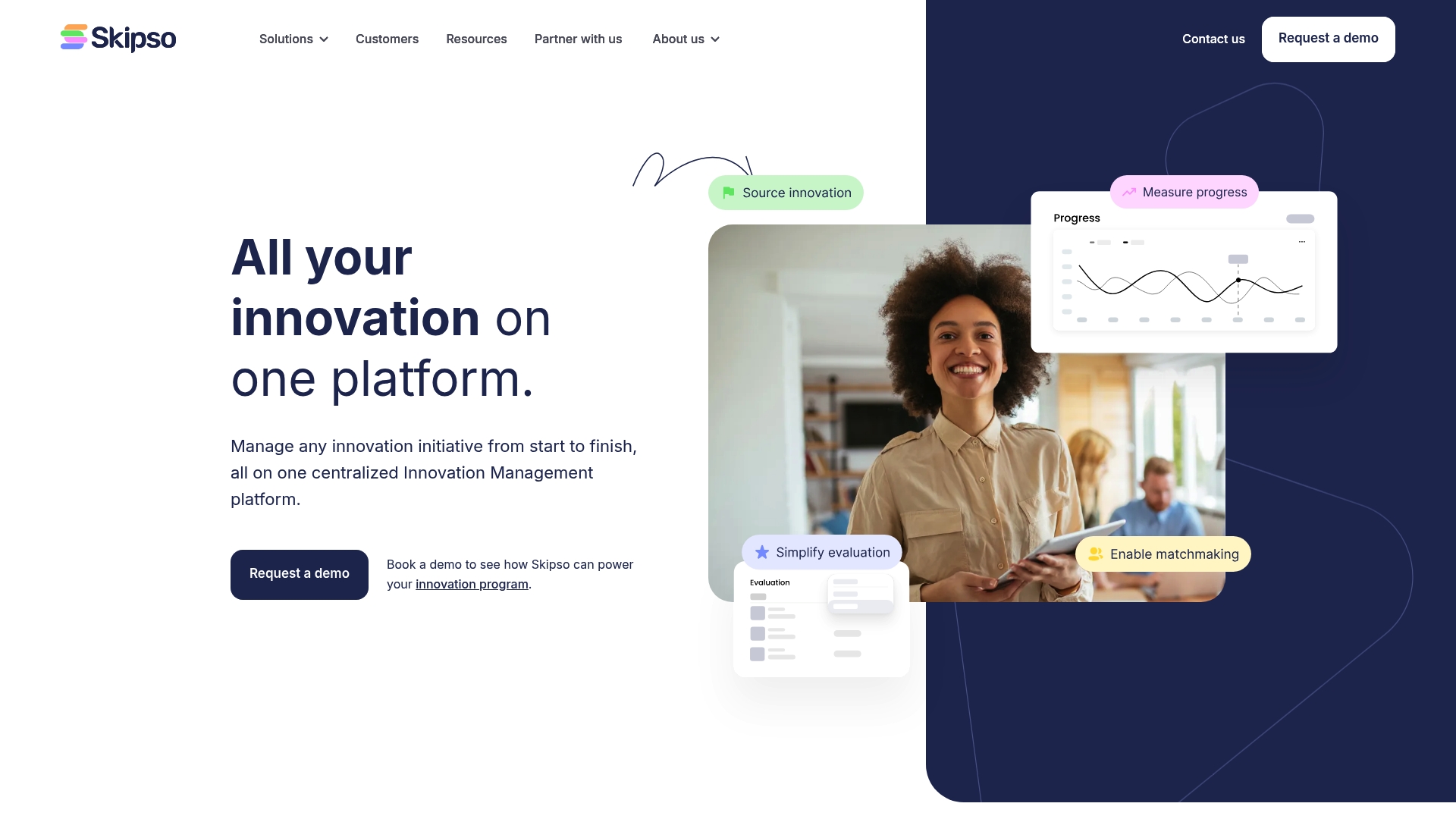


Complete Guide to Nurturing Intrapreneurship
Did you know that organizations embracing intrapreneurship are up to 30 percent more likely to outperform competitors in innovation-driven markets? As companies look for new ways to stay relevant, the push for internal entrepreneurship is reshaping how employees create breakthrough solutions. Understanding the core principles and models of intrapreneurship helps leaders empower talent, unlock creativity, and turn bold ideas into lasting value.
Table of Contents
- Defining Intrapreneurship and Its Core Principles
- Types of Intrapreneurship in Modern Organizations
- Key Characteristics of Successful Intrapreneurs
- Strategies for Building a Supportive Culture
- Overcoming Barriers and Measuring Success
Key Takeaways
| Point | Details |
|---|---|
| Definition of Intrapreneurship | Intrapreneurship allows employees to act as internal entrepreneurs, fostering innovation within the existing organizational structure. |
| Core Principles | Key principles include creativity, autonomy, proactive behavior, and risk tolerance, essential for driving strategic change. |
| Types of Intrapreneurship | Various models exist, such as internal ventures and corporate spin-offs, each designed to enhance organizational creativity and innovation. |
| Supporting Culture | Organizations must cultivate an innovation-friendly culture through psychological safety, transparent communication, and resource allocation to sustain intrapreneurial efforts. |
Defining Intrapreneurship and Its Core Principles
Intrapreneurship represents a transformative approach to organizational innovation where employees function as internal entrepreneurs, driving strategic change from within a company’s existing structure. Wikipedia defines intrapreneurship as a process involving employees acting as entrepreneurs, fostering innovation and calculated risk-taking to develop groundbreaking products or services.
At its core, intrapreneurship is characterized by several key principles that distinguish it from traditional workplace behaviors. According to research from SpringerLink, these principles include:
- Creativity: Generating novel solutions to organizational challenges
- Autonomy: Empowering employees to pursue innovative ideas independently
- Proactive Behavior: Taking initiative without waiting for explicit instructions
- Risk Tolerance: Willingness to experiment and potentially fail in pursuit of breakthrough innovations
Successful intrapreneurship requires organizations to create an environment that actively supports and rewards innovative thinking. More than a buzzword: How intrapreneurship is redefining innovation in 2023 highlights that this approach is not just about generating ideas, but about creating structured pathways that transform those ideas into tangible organizational value. Employees must feel psychologically safe to challenge existing processes, propose unconventional solutions, and collaborate across traditional departmental boundaries.
Types of Intrapreneurship in Modern Organizations
Modern organizations have developed sophisticated approaches to internal innovation, with multiple distinct types of intrapreneurship emerging to drive strategic transformation. ArXiv research highlights that contemporary companies implement various intrapreneurship models, including internal ventures, corporate spin-offs, and strategic innovation bootlegging, each designed to foster organizational creativity through unique structural mechanisms.
One particularly fascinating approach is intrapreneurial bricolage, which Wikipedia defines as a creative innovation method where employees develop breakthrough solutions by ingeniously leveraging existing organizational resources. Key types of intrapreneurship include:
Here’s a comparison of the main types of intrapreneurship in modern organizations:
| Type of Intrapreneurship | Key Characteristics | Organizational Goal |
|---|---|---|
| Internal Venture Development | New units within company Structured innovation |
Launch new products/services |
| Corporate Spin-offs | Independent entities Originate from core firm |
Monetize major innovations |
| Innovation Bootlegging | Unofficial projects Outside formal approval |
Harness hidden creativity |
| Intrapreneurial Bricolage | Creative use of resources Problem-solving focus |
Maximize existing assets |
- Internal Venture Development: Creating new business units or product lines within the existing organizational framework
- Corporate Spin-offs: Developing independent entities that emerge from core organizational innovations
- Innovation Bootlegging: Unofficial innovation projects pursued outside traditional organizational approval processes
- Intrapreneurial Bricolage: Resourceful problem-solving using limited existing resources
To support these diverse intrapreneurship models, organizations must cultivate flexible environments that encourage experimentation.
![]() 5 creative ways to foster internal innovation suggests that successful intrapreneurship requires leadership commitment, structured innovation channels, and a culture that rewards calculated risk-taking and creative problem-solving. By recognizing and supporting these different intrapreneurship types, companies can transform internal talent into a powerful engine of continuous organizational renewal and competitive advantage.
5 creative ways to foster internal innovation suggests that successful intrapreneurship requires leadership commitment, structured innovation channels, and a culture that rewards calculated risk-taking and creative problem-solving. By recognizing and supporting these different intrapreneurship types, companies can transform internal talent into a powerful engine of continuous organizational renewal and competitive advantage.
Key Characteristics of Successful Intrapreneurs
Successful intrapreneurs are transformative professionals who drive organizational innovation from within. Wikipedia highlights that these remarkable individuals exhibit critical traits like creativity, self-motivation, and proactivity, enabling them to spark meaningful change in complex corporate environments. They are not just employees, but internal change agents who challenge existing paradigms and generate breakthrough solutions.
According to research from SpringerLink, effective intrapreneurs are characterized by several distinctive qualities that set them apart from traditional employees. These key characteristics include:
- Autonomous Thinking: Ability to work independently and make strategic decisions
- Risk Tolerance: Willingness to experiment and embrace potential failure
- Strong Innovation Orientation: Continuous drive to develop novel approaches
- Adaptability: Quickly adjusting strategies based on organizational dynamics
- Strategic Communication: Effectively pitching and promoting innovative ideas
Building an Innovation-Friendly Culture suggests that organizations play a crucial role in nurturing these intrapreneurial characteristics. By creating supportive environments that reward creative thinking, provide resources for experimentation, and recognize innovative contributions, companies can cultivate a robust ecosystem where intrapreneurs can thrive and transform internal potential into tangible organizational success.
Strategies for Building a Supportive Culture
Innovation culture is the lifeblood of organizational transformation. Wikipedia reveals that successful organizations adopt innovative leadership approaches that combine multiple leadership styles to systematically encourage creativity and breakthrough idea generation among employees. This multifaceted approach goes beyond traditional management techniques, creating an environment where innovation can naturally flourish.
Wikipedia highlights the critical importance of values-based innovation, which aligns organizational innovation efforts with core strategic principles. Key strategies for building a supportive intrapreneurial culture include:
- Psychological Safety: Creating environments where employees feel secure sharing unconventional ideas
- Transparent Communication: Establishing clear channels for idea submission and feedback
- Recognition Systems: Developing mechanisms that reward innovative thinking
- Resource Allocation: Dedicating time, budget, and infrastructure to support experimental projects
- Cross-Functional Collaboration: Breaking down departmental silos to encourage knowledge sharing
Building a culture of innovation: leadership strategies and organizational change emphasizes that transforming organizational culture requires committed leadership. Leaders must model innovative behaviors, demonstrate genuine openness to new ideas, and create systematic pathways that transform individual creativity into collective organizational capabilities. By embedding these strategies, companies can develop resilient, adaptive cultures that continuously generate competitive advantages through internal innovation.

Overcoming Barriers and Measuring Success
Intrapreneurship implementation presents complex challenges for organizations seeking to drive internal innovation. ArXiv research specifically highlights that large software companies frequently encounter significant obstacles, including maintaining organizational agility and managing intricate innovation processes. These challenges can dramatically impede the successful integration of intrapreneurial initiatives.
The InnerSource Circumplex Model, as detailed in ArXiv, provides a comprehensive framework for organizations to systematically map and overcome collaboration barriers. Key strategies for addressing intrapreneurship challenges include:
- Cultural Resistance: Identifying and addressing organizational mindsets that block innovation
- Resource Constraints: Developing flexible allocation mechanisms for innovative projects
- Communication Gaps: Establishing transparent cross-departmental communication channels
- Performance Measurement: Creating nuanced metrics beyond traditional performance indicators
- Risk Management: Implementing structured approaches to evaluate and support experimental initiatives
How to Measure Innovation suggests that successful intrapreneurship measurement requires a holistic approach. Organizations must develop sophisticated metrics that capture not just immediate outcomes, but long-term innovation potential. By creating comprehensive evaluation frameworks that recognize both tangible results and strategic learning opportunities, companies can transform potential barriers into pathways for continuous organizational growth and adaptability.
Unlock the Power of Intrapreneurship With Skipso
Intrapreneurship demands more than just good ideas. It requires a culture that fosters psychological safety, transparent communication, and strong leadership support to turn those ideas into real change. If you are struggling with hurdles like resource constraints, cultural resistance, or measuring innovation impact, you are not alone. Transforming intrapreneurial potential into lasting organizational value starts with the right tools that support each step of your innovation journey.

Experience how Skipso’s comprehensive innovation management platform equips corporations, governments, and universities to build an innovation-friendly culture and run high-impact programs. Whether you want to launch internal venture initiatives or encourage calculated risk-taking, Skipso provides the infrastructure to empower your people confidently. Start breaking down communication gaps, reward creativity, and measure success beyond traditional metrics today by visiting Skipso. Explore how to foster intrapreneurship with 5 creative ways to foster internal innovation and deepen your culture-building strategies at Building a culture of innovation: leadership strategies and organizational change. Take the first step toward turning your organization’s innovation challenges into powerful growth opportunities now.
Frequently Asked Questions
What is intrapreneurship?
Intrapreneurship is an innovative approach within organizations where employees act like entrepreneurs, driving strategic change and fostering innovation from within the existing company structure.
What are the key principles of successful intrapreneurship?
Successful intrapreneurship is characterized by creativity, autonomy, proactive behavior, and risk tolerance. These principles empower employees to generate novel solutions and take initiative in pursuit of innovation.
How can organizations support intrapreneurship?
Organizations can support intrapreneurship by fostering a culture that encourages psychological safety, transparent communication, recognition of innovative efforts, resource allocation for experimental projects, and cross-functional collaboration.
What challenges do organizations face when implementing intrapreneurship?
Organizations may encounter challenges such as cultural resistance, resource constraints, communication gaps, and difficulties in measuring performance. Overcoming these barriers requires a systematic approach to identify and address the existing obstacles.
Recommended













